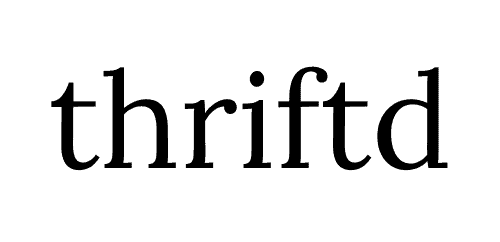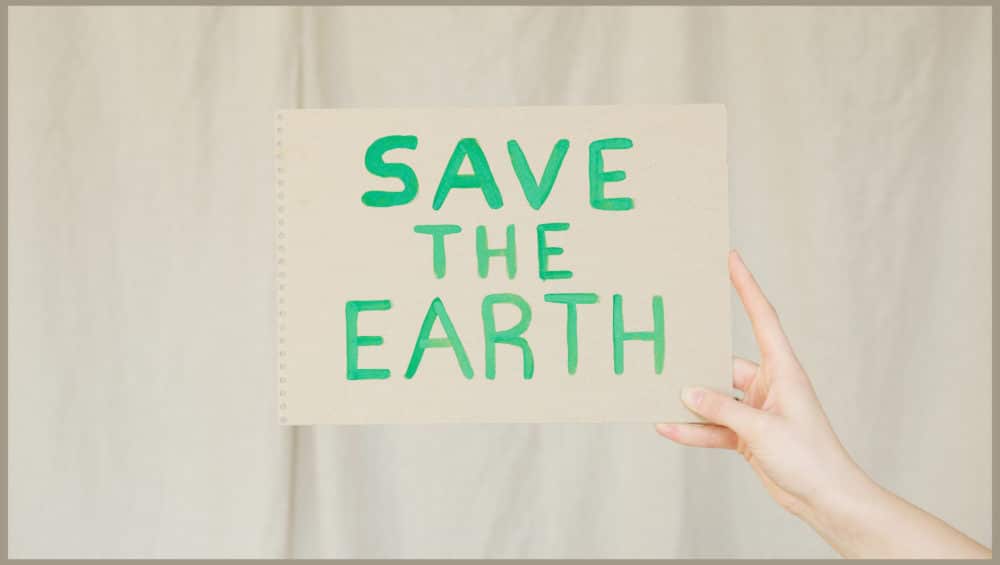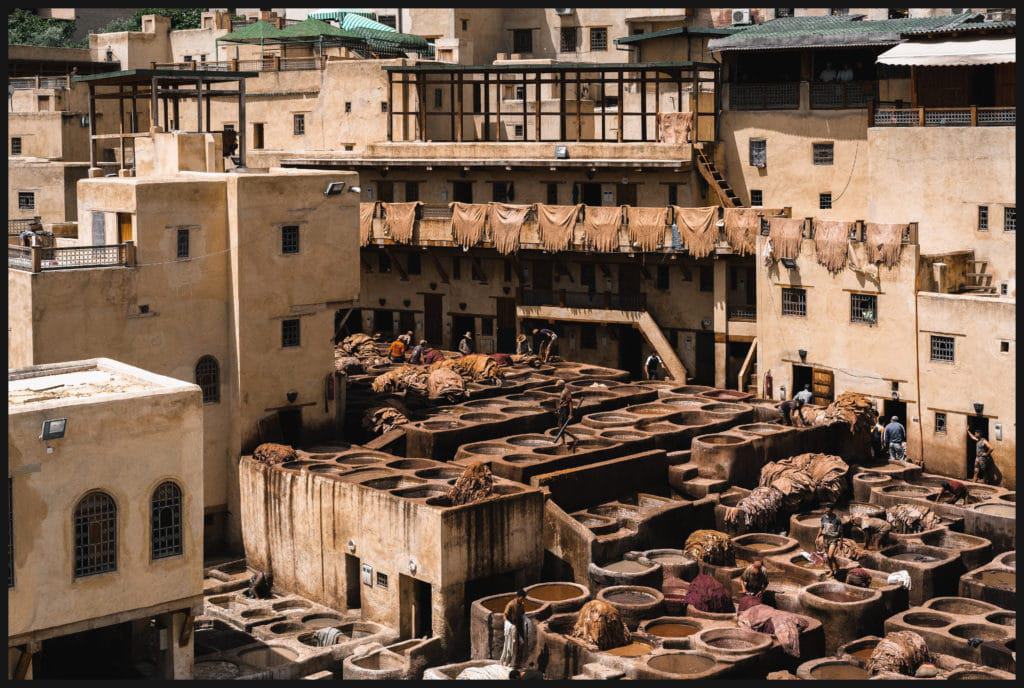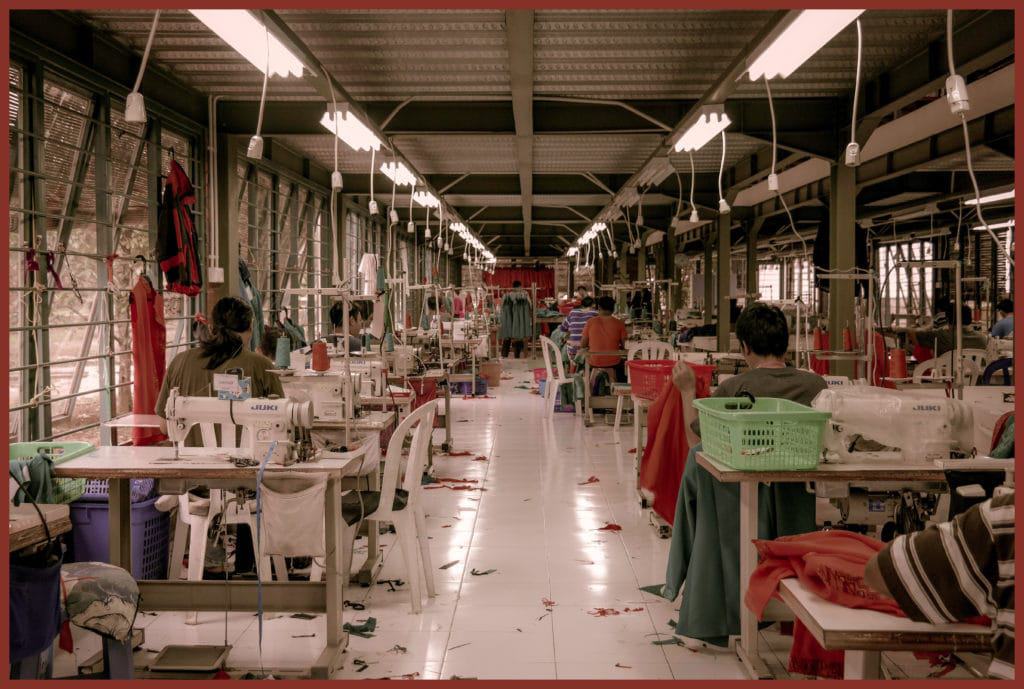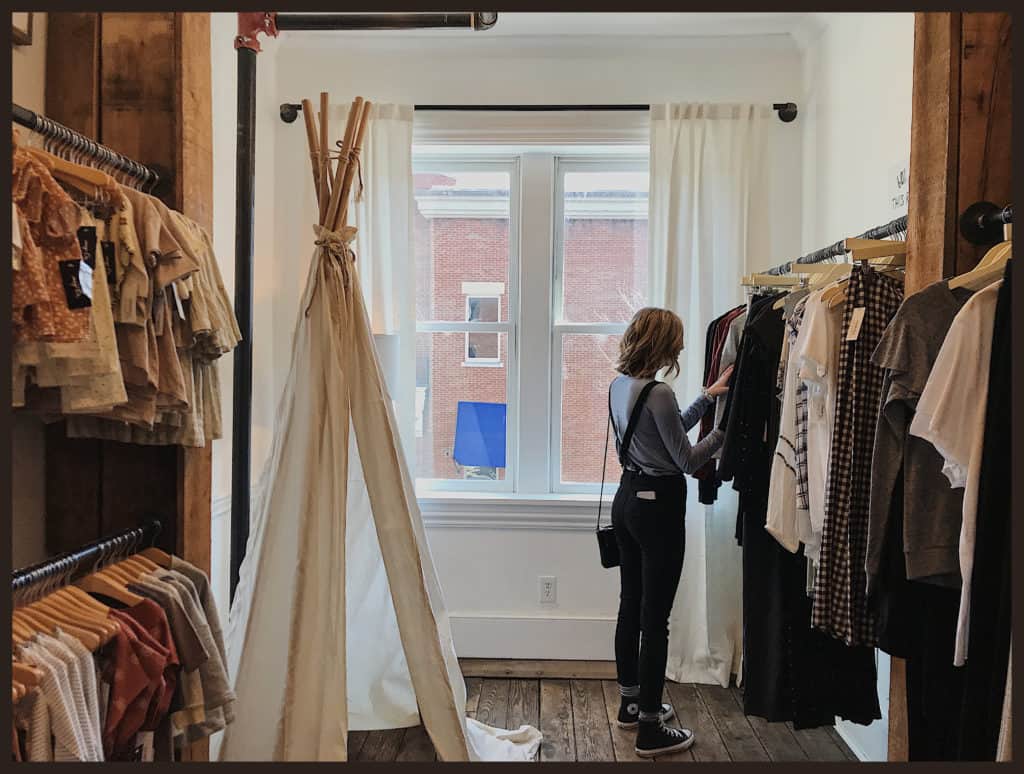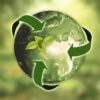Every year, the Baptist World Aid Australia delivers a report that contains the rating of almost all the fashion brands that aren’t straightforward or ethical clothing brands.
For the eighth year straight, Baptist World Aid Australia has put fashion brands and their parent organizations interrogated and ranked on their ethical fashion performance. And the report for 2021, which was published in October 2021, is more complex and extensive in scope than ever and features the fundamental data which conscious-living clients search for with regards to how their top retail brands produce their items.
Before we get into the details of the report and the progress made in ethical fashion, let’s dive first into what is the ethical fashion report and why it’s important.
What is The 2021 Ethical Fashion Report (EFR)?
The 2021 Ethical Fashion Report (EFR) is the documentation of the analysis done on the ethical sourcing methods in the fashion sector based on information obtained through the EFR survey. The survey comprises five major sections and includes 46 questions that cover 18 indicators of supply chain practice.
The 2021 survey is comparable to prior years’ surveys, but it is evaluated every two years to validate that concerns of growing importance are addressed, and questions and validation criteria reflect current best practices in ethical sourcing. This has resulted in the introduction of new questions regarding supply chain governance, Modern Slavery Statements submission, and circular environmental sustainability models.
All the effort put in by Baptist World Aid Australia is done to ensure all the practices of your favourite brands are ethical and sustainable which contributes to making a better future.
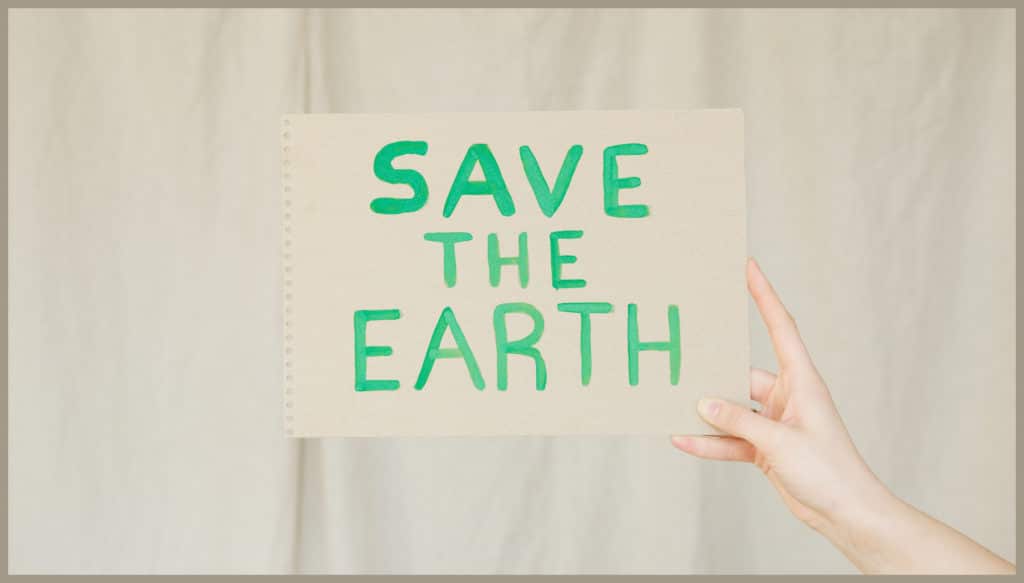
What Challenges are Being Addressed by the Ethical Fashion Report?
For the 2021 report, there are three major challenges that are being addressed in the fashion industry: modern-day slavery, climate impact, and COVID-19. Let’s talk about each in detail and how it
The Modern-Day Slavery in the Garment Industry
The clothing industry is one of the top five industries at risk from modern slavery. Clothing supply chains are located in areas with high rates of poverty and employ a large number of exploited individuals. Modern-day slavery risks can emerge at any stage in the production process, but they are most prevalent in sectors with limited visibility, such as at the raw materials level, and among subcontracted home and migrant laborers.
Companies are monitoring their workplaces for these high-risk employment practices on a regular basis, but there is still room for improvement across the board, particularly at inputs and raw materials.
Below are some of the labor sectors and workers that are the common targets of modern-day slavery.
Agriculture Sector
The ugly truth is that the raw materials in our clothing face the least scrutiny from clothing companies. Children are frequently employed for tasks such as organic cotton picking due to the fact that their tiny hands allow them to work quickly and efficiently. The traceability of where the materials are sourced is improving, and in some cases, it is aided by technology. Traceability of organic cotton, for example, is difficult since the fiber may be produced from a variety of crops and sources.
Subcontractors
Many of the most significant risks at manufacturing phases have recently migrated into subcontracting and homeworking environments, as businesses have improved their auditing requirements and processes. In certain cases, this is justifiable, such as when a specific talent is required. Oversight of subcontracting, on the other hand, is difficult; despite the fact that vendors are prohibited by a code of conduct from engaging in unauthorized outsourcing and using shadow factories.
Migrant Workers
Migrant workers are especially susceptible to forced labor since they are beyond the reach of their home country’s laws and frequently rely on remittances to support relatives or communities at home. Employers and labor brokers can take advantage of this vulnerability by demanding exorbitant money and keeping worker passports, both of which essentially traps migrant workers until they pay off their debts.
Mitigation of Forced Labour through Government Remediation or Boycott
Around 4 million people are enslaved around the world as a result of their governments’ actions—through prison labour, widespread upheaval based on culture, race, or religion, or indiscriminate periodic forced labour in a particular industry for low or no living wages.
A good example of this is China, which has been accused by the United Nations of treating its Uyghur Muslim minority harshly. Thousands have been imprisoned in education camps and forced labor situations, particularly in the Xinjiang region’s cotton industry. Because Xinjiang is China’s leading cotton producer, it’s impossible to guarantee that Cotton items sourced from there are not tainted with forced labor.
Now, the best way to mitigate this forced labour abuse is through government remediation. However, if the local government system implicitly allows this to happen. The next step that can be done is through boycotting fashion companies that have connections with these suppliers that utilize forced labour.
The Climate Impact of the Global Fashion Industry
The second challenge when talking about ethical fashion is the impact it has on the climate and environment. And one of the unknown facts about this is that 10 percent of the global emissions of greenhouse gases come from fashion companies. To put things into perspective of how big that is, the aviation industry contributed 0.98 billion tonnes in 2019 while the fashion industry produced an astonishing 2.1 billion tonnes in 2018.
Now, this may come as a surprise to the general public because the process of manufacturing clothes is not widely known. And that is why awareness is one of the reasons as to why this fashion report was created.

Today, approximately 70% of the fashion industry’s emissions are caused by supply chain operations including textile manufacturing and raw material production. The remaining 30 percent is due to retail sales, consumer usage, and end-of-life phases. If the fashion sector fails to make significant emission reduction efforts, its greenhouse gas (GHG) emissions are expected to rise from 2.1 billion tonnes a year in 2018 to 2.7 billion tonnes a year by 2030.
Circular Economy and Fashion as Climate Impact Response
Circular fashion or circular economy in simple terms is recognizing the value of used clothing as a material resource that can be used to create further value in the form of new goods. In other words, it’s all about establishing a “closed-loop system” to avoid extracting more from the environment and generating more textile waste.
Circular business models are one of the most important strategies to get to a carbon-neutral industry. The increasing use of circular thinking by businesses is allowing them to meet emissions reduction goals via a circular business perspective since the production of virgin fibers is a highly emissions-intensive procedure that accounts for 38% of all GHG emissions in the apparel value chain.
The reliance of the fast fashion industry on synthetic fibres does not help either—this segment alone accounts for 65 percent of all clothing produced, using an estimated 342 million barrels of oil in yearly production.
Another prevalent issue, of course, is fashion’s reliance on sales growth within a system that promotes overproduction and overconsumption of clothes. To achieve a carbon-neutral world beyond 2030, fashion must re-evaluate business models that rely on continual growth via the number of items sold. According to our study, half of the fashion companies are now looking at the problem of overproduction. Emissions might be reduced by 158 million tonnes by 2030 if the business sector concentrated its efforts on reducing excess inventory by just 10 percent across the world.
The Struggle of Garment Workers Due to COVID-19
In 2020, the COVID Fashion Report looked at how companies were assisting vulnerable employees in their suppliers. The study uncovered hazards for garment workers, including unjust order cancellations and penalties that result in wage loss, lack of health and safety precautions, mass layoffs with no compensation, union-busting, movement restrictions, and forced overtime when lockdowns ended. These threats continue to be important to the well-being of vulnerable workers more than a year later.
COVID-19 has revealed how fragile the transactional brand-supplier method is. There’s now a chance to ‘reimagine’ more mutual fashion brand-supplier relationships, where brands assume a greater share of financial risk and investment of their suppliers. Rather than forcing this on suppliers, brands can shoulder additional financial burden and responsibility for rising raw material and input expenses as well as ensuring that employees are paid a living wage.
However, research shows the emergence of a post-pandemic gap that sees companies requesting greater supplier flexibility (i.e. shorter production cycles, lower costs, faster shipments) while suppliers are asking for greater stability after the canceled orders of 2020. COVID-19 has left the fashion industry with two options: remain stagnant in its exploitative and unsustainable ways, or build back better with a more resilient, planet-friendly, and people-focused model of production.
How Was The Ethical Fashion Report Made?
Below is the step-by-step process in which the report was made-from engagement, selection, and scoring. Let’s dive into it.
The Research and Company Engagement Process
The survey and data collection were done between February and July 2021. During this period, Companies were sent a survey as well as a thorough Survey Support Document, which outlined the anticipated criteria for each question.
At least two comprehensive preliminary reviews of a company’s available data were conducted by a dedicated researcher for each business. The inspections were based on a limited survey of the publicly accessible information in February/March and any May/June draft submissions (or, in the case of non-responsive firms, the second scan of public data).
These preliminary reviews and accompanying outstanding questions were provided to companies to ensure they had the opportunity to respond and/or provide additional information. A third full review then took place based on the company’s final submission by mid-July. A second researcher conducted a full independent review of each company’s evidence to ensure accuracy and consistency before their evidence was finalized and scored.
The Company Selection Process
This Ethical Fashion Report of 2021 includes 98 companies that represent 420 brands. These numbers include seven new enterprises and 91 old ones from previous years’ COVID Fashion Report.
Following the criteria established in 2020, all firms previously examined in the EFR that are still solvent and expected to gross more than AU$50 million each year (NZ$30 million for New Zealand companies) have been included in the study. Smaller enterprises were given the option to participate but did not join if they declined.
This selection process ensures that the largest companies with the widest consumer reach and the subsequent impact on workers and the planet were included in the report, while still enabling smaller companies that prioritized making ethical clothing to participate and have their efforts recognized.
The Ethical Brands Scoring Process
For the most part, a Yes/Partial/No grading system was used for questions, and credit was granted based on evidence criteria set out in a comprehensive Survey Support Document provided to all firms at the outset of the study. A percentage number is used to give credit in certain questions (e.g., percent supply traced). Companies are credited based on the evidence they produce.
There are 5 sections in which each brand is assessed and they are listed below together with their weight in percentage:
- Supplier Relationships and Human Rights Monitoring (34%)
- Worker Empowerment (25%)
- Environmental Sustainability (20%)
- Tracing and Risk (15%)
- Policies and Governance (6%)
Aside from that, the scores for each mentioned section will be classified further in terms of the measures taken on each supply chain stage and then adjusted based on its weight mentioned below:
- Raw Materials (20%)
- Input Production (35%)
- Final Stage Production (45%)
Supplier Relationships and Human Rights Monitoring
This section is all about how much fashion companies ensure that they don’t exploit people (which can be considered as modern-day slavery) and this responsibility extends to their suppliers. Here are some criteria included in the ethical fashion survey:
- Responsible purchasing policies and strategies
- Comprehensive labor rights for managers and suppliers
- Prohibition of subcontracting or subcontracting monitoring
- Ensuring that suppliers don’t engage in child labour
- Addressing discrimination in the workplace
- Ensuring safe working conditions
- On-time resolution of wages and overtime pay
- Monitoring and reporting on supplier’s final stage facilities
The Current Progress
There is a lot of overall progress in this section. In fact, 95 percent of companies in the EFR 2021 survey have audited at least some final stage facilities over the past two years. This is a 10 percent increase from 2019, with 37 percent auditing all traced final stage facilities.
Unfortunately, input production and raw materials visibility was significantly lower, with only 12% of firms auditing over half of the traced inputs facilities, and one percent auditing over half of the raw materials. While the rise in monitoring from 2019 demonstrates that businesses are becoming more invested in labor rights management, the low level of insight into inputs and raw materials is concerning as it allows for labor rights abuses to be perpetrated more easily.
Worker Empowerment
The modern slavery in fashion businesses will only be affected by a real change in the future if garment workers are armed with knowledge, resources, and agency to demand it themselves. That is why this section is focused on empowering garment workers through making fashion brands commit to various conditions in the survey criteria such as:
- All final-stage facilities must pay living wages and make improvements
- Training garment workers about rights and entitlements
- Establishment of worker unions or collective bargaining
- Accessible grievance mechanism to all workers in their company as well as their suppliers
The Current Progress
There has been improvement in this area. For example, 54% of businesses have final stage facilities with formal unions or representative bodies, up from 47% in 2019. This increase may be due to a development in ethical sourcing practices, as firms move beyond basic activities (such as introducing a code of conduct) and toward accepting responsibility for employee outcomes.
Although efforts to raise pay are progressing in the right direction, outcomes for employees have not improved. In fact, the proportion of firms that could show that at least some final-stage suppliers paid a living wage decreased from 20% in 2019 to 15% in 2021. It’s possible that COVID-19 disruption and difficulties with unpaid wages during this time period influenced this decline.
Environmental Sustainability
The global threat of climate change is very real and the threats we face are very dire. And I know, most Australians already know this because it’s all over the news these days.
That is why this section focuses on the climate impact made by the garment industry. And the survey does this by exploring the metrics focused on contributions made to climate change including the in-use and end-of-life environmental impact of clothes. That is why the survey includes criteria such as:
- Products should be made from sustainable fibres
- Benchmarking and making improvements on water usage
- Implementing improvements on wastewater facilities of wet-processing facilities
- Climate target and plan for implementing sustainable manufacturing
The Current Progress
In 2021, the rate of sustainable fibers uptake improved significantly. The proportion of brands using some sustainable materials in their collections went from 61% in 2019 to 87% in 2021.
This is a promising shift, given that the emissions impact of raw fibre manufacturing accounts for roughly 40% of all lifecycle emissions. This demonstrates an increase in environmental awareness and demand from customers for more ethical and sustainable fashion brand choices.
However, only 16% of businesses are using sustainable options for more than half of their total natural fibres. The relatively small number who have made a substantial transition in terms of fibre content emphasizes the significance of ensuring that sustainability concerns are considered throughout the procurement and not relegated to a specialty choice.
Tracing and Risk
This section pertains to how a brand checks and monitors its raw material suppliers as well as their final stage supplier lists. Previously, when the effort to push for ethical fashion still wasn’t made, this is one of the most secretive parts of a fashion brand.
That is why the survey questions contain these criteria:
- Ethical fashion brands must actively trace and monitor their raw material suppliers, fabric suppliers, and final stage suppliers
- Labor risks, environmental risks, and human rights in the supply chains must be assessed
The Current Progress
The majority of the industry has improved in all eight tracing and risk-focused questions since 2019, which is a positive sign that the industry baseline continues to move in the correct way. And this is due to an increase in clothing corporations using certification-based tracing methods.
This is an encouraging development for a sector that, for many years, cited “trade secrets” and “commercial confidence” as its primary reasons for refusing to disclose this data. With most businesses now publishing in the final stage, those who have not yet done so are falling behind their peers as the industry generally accepts this as conventional.
Another area of significant growth is human rights risk assessments, with 90% of businesses currently doing these comprehensive evaluations for final-stage suppliers (70% and 73%). This is in part due to the Modern Slavery Act’s demand for supply chain transparency.
Policies and Governance
This section is all about assessing if the company codes pose risks for the workers of the fashion company as well as their supply chain. That is why the survey questions for this contains criteria such as:
- An ethical fashion brand must have a comprehensive code of conduct
- The company code of conduct must be applied to all of their suppliers
- Adherence to the company code of conduct must be stipulated in the contract with suppliers
- Managers and executives must be accountable for overseeing the implementation
The Current Progress
So far, there has been some progress since the 2019 report, sixty-five percent of businesses have a robust code that covers the four ILO Fundamental Principles and Rights at Work, as well as two Ethical Trading Initiative (ETI) standards. Codes of conduct are used by organizations to inform potential suppliers of basic working conditions that must be met. So, to guarantee the rights of all workers, employers must strictly enforce this throughout their supply chains.
Around 70 percent of companies could provide evidence that the company code of conduct had been communicated to at least two stages of the supply chains, with 20 percent demonstrating the code had reached all stages of the chain.
The supply chain’s farther removed levels are the most vulnerable to worker exploitation, thus businesses must increase their efforts to ensure inputs and raw material suppliers follow code regulations. These findings suggest that many firms are already acknowledging that their responsibility extends beyond final production.
It’s critical to identify clear points of accountability for human rights and environmental sustainability at both the management and governance levels in order to ensure that ethical sourcing priorities are embedded within a firm’s operations. It minimizes the chance that ethical considerations are compartmentalized from core activities or obligations assigned to inexperienced staff without suitable board or executive involvement in minimizing risks.
Final Thoughts
Overall, we can definitely see improvements in companies moving toward sustainable fashion. However, there are still a lot of things that need to be done before it can be truly eco-friendly and have a very small carbon footprint. And to that end, we are thankful to organizations like Baptist World Australia for continuously trying to make a change.
We are also thankful to companies that have continuously strived and made improvements to become an ethical brand. And these companies are those that have topped the list of the Ethical Fashion Report, namely:
- Adidas
- Etiko
- H&M
- Joyya
- Levi Strauss and Co
- Mighty Good Basics
- Nike
- Outland Denim
- Patagonia
- VF Corp
And as consumers, we can’t just turn a blind eye, because we also have a role to play in this improvement. Using the Ethical Fashion Guide, let’s re-evaluate our favourite brands and shop ethically.
